When searching for different training programs for your furry friend, I’m sure you have come across a multitude of different options. Whether it is private training, group classes, or DIY lessons, there is always a way to be improving your dog’s skillset. However, there are many different ways to train, and not every dog learns and processes information the same. Therefore, while certain training methods may work for one dog, it may not resonate with another.
It is important to find what works and what doesn’t, so that you do not waste time or get discouraged from ineffective training methods. At the same time, you may want to have a way to confirm that the training method you’ve chosen is actually effective. As a result, American Kennel Club created the AKC Canine Good Citizen program (CGC), a two-part, ten skill course to simplify the training process and form a standard skill set for all dogs participating. This course was first designed in 1989, and over 1 million dogs and their owners have participated since then. Its purpose is to create trust between you and your pup, and also to ensure they’ll be well behaved in and out of the home.
Whether you follow the official AKC Canine Good Citizen course or choose another method of training and just want to put your dog up to the test, the ten skills create the foundation for a positive, stress-free relationship between you and your dog. As stated, the course is broken down into ten different skills that will be tested in a controlled environment. Below are how an AKC certified evaluator commonly refers to the skills in the testing environment – but don’t worry about the more formal language. They’re still the same 10 behaviors you’ve been working on together, just in a uniform way so CGC dogs from California to Connecticut all know they’re working towards a common goal.
Test 1
Accepting a Friendly Stranger
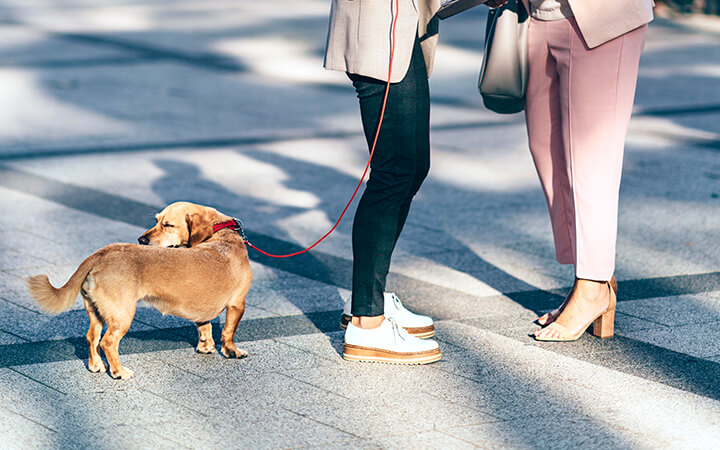
This test demonstrates that the dog will allow a friendly stranger to approach it and have a conversation with the handler in a natural, everyday situation. The evaluator walks up to the dog and handler and greets the handler in a friendly manner, ignoring the dog. The evaluator and handler shake hands and exchange pleasantries. The dog must show no sign of resentment or shyness.
Test 2
Sitting Politely for Petting
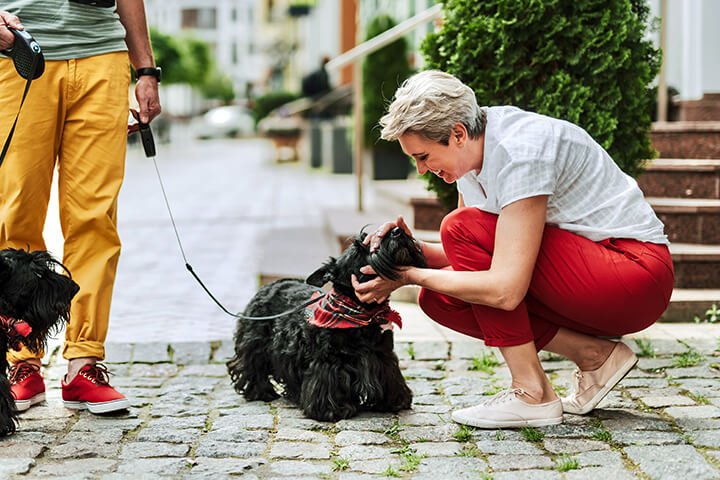
This test demonstrates that the dog will allow a friendly stranger to touch it while the handler is nearby. With the dog sitting at the handler’s side, the evaluator pets the dog on the head and body. The handler may talk to his or her dog throughout the exercise. The dog may stand in place as it is petted. The dog must not show shyness or resentment.
Test 3
Appearance and Grooming
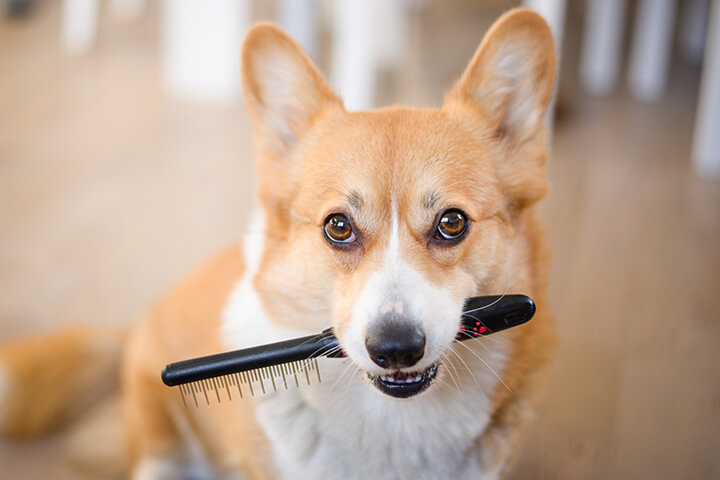
This practical test demonstrates that the dog will welcome being groomed and examined and will permit someone, such as a veterinarian, groomer or friend of the owner, to do so. It also demonstrates the owner’s care, concern and sense of responsibility. The evaluator inspects the dog to determine if it is clean and groomed. The dog must appear to be in healthy condition (i.e., proper weight, clean, healthy and alert). The handler should supply the comb or brush commonly used on the dog. The evaluator then softly combs or brushes the dog, and in a natural manner, lightly examines the ears and gently picks up each front foot. It is not necessary for the dog to hold a specific position during the examination, and the handler may talk to the dog, praise it and give encouragement throughout.
Test 4
Out for a Walk (walking on a loose lead)
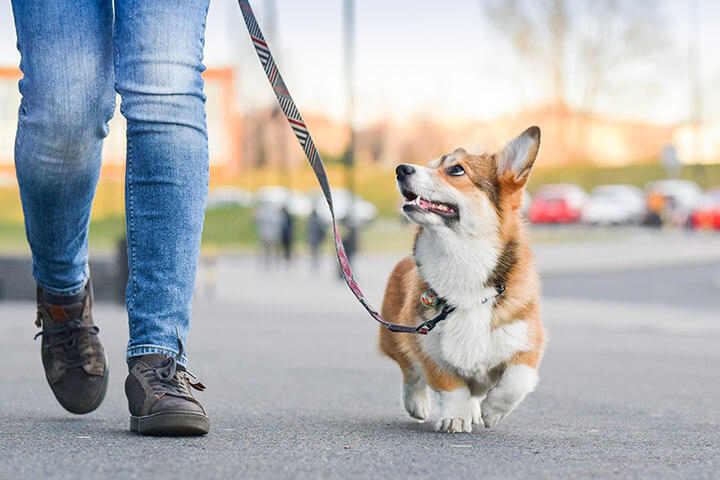
This test demonstrates that the handler is in control of the dog. The dog may be on either side of the handler. The dog’s position should leave no doubt that the dog is attentive to the handler and is responding to the handler’s movements and changes of direction. The dog need not be perfectly aligned with the handler and need not sit when the handler stops. The evaluator may use a pre-plotted course or may direct the handler/dog team by issuing instructions or commands. In either case, there should be a right turn, left turn, and an about turn with at least one stop in between and another at the end. The handler may talk to the dog along the way, praise the dog, or give commands in a normal tone of voice. The handler may sit the dog at the halts if desired.
Test 5
Walking Through a Crowd
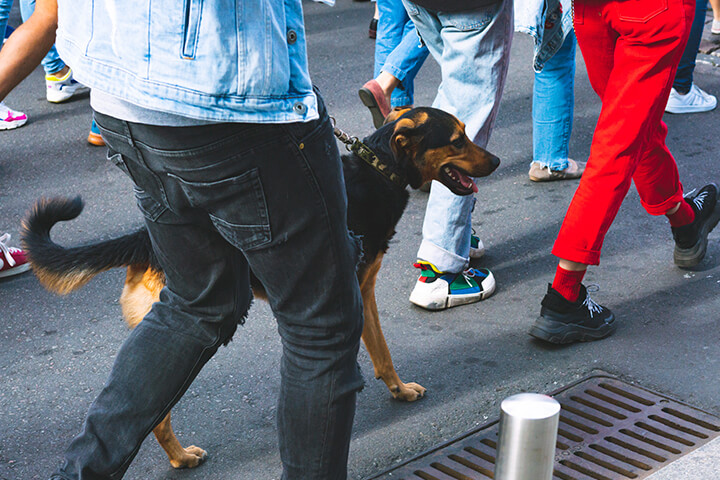
This test demonstrates that the dog can move about politely in pedestrian traffic and is under control in public places. The dog and handler walk around and pass close to several people (at least three). The dog may show some interest in the strangers but should continue to walk with the handler, without evidence of over-exuberance, shyness or resentment. The handler may talk to the dog and encourage or praise the dog throughout the test. The dog should not jump on people in the crowd or strain on the leash.
Test 6
Sit and Down on Command and Staying in Place
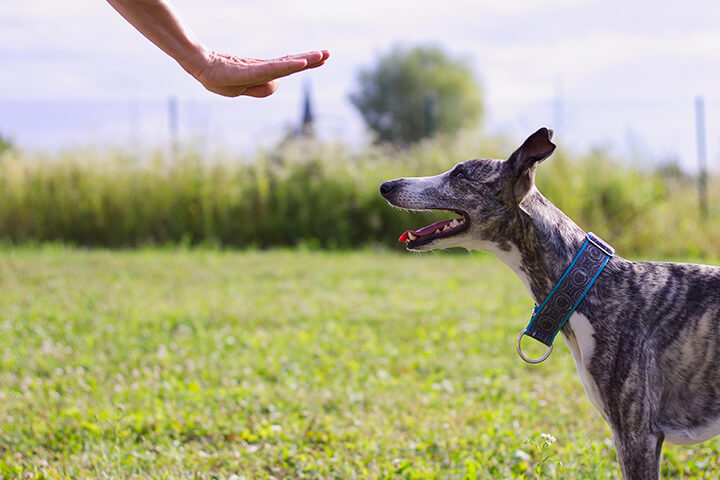
This test demonstrates that the dog has training, will respond to the handler’s commands to sit and down, and will remain in the place commanded by the handler (sit or down position, whichever the handler prefers). The dog must do sit AND down on command, then the owner chooses the position for leaving the dog in the stay. Prior to this test, the dog’s leash is replaced with a line 20 feet long. The handler may take a reasonable amount of time and use more than one command to get the dog to sit and then down. The evaluator must determine if the dog has responded to the handler’s commands. The handler may not force the dog into position but may touch the dog to offer gentle guidance. When instructed by the evaluator, the handler tells the dog to stay and walks forward the length of the line, turns and returns to the dog at a natural pace. The dog must remain in the place in which it was left (it may change position) until the evaluator instructs the handler to release the dog. The dog may be released from the front or the side.
Test 7
Coming when Called

This test demonstrates that the dog will come when called by the handler. The handler will walk 10 feet from the dog, turn to face the dog, and call the dog. The handler may use encouragement to get the dog to come. Handlers may choose to tell dogs to “stay” or “wait” or they may simply walk away, giving no instructions to the dog.
Test 8
Reaction to Another Dog

This test demonstrates that the dog can behave politely around other dogs. Two handlers and their dogs approach each other from a distance of about 20 feet, stop, shake hands and exchange pleasantries, and continue on for about 10 feet. The dogs should show no more than casual interest in each other. Neither dog should go to the other dog or its handler.
Test 9
Reaction to Distraction
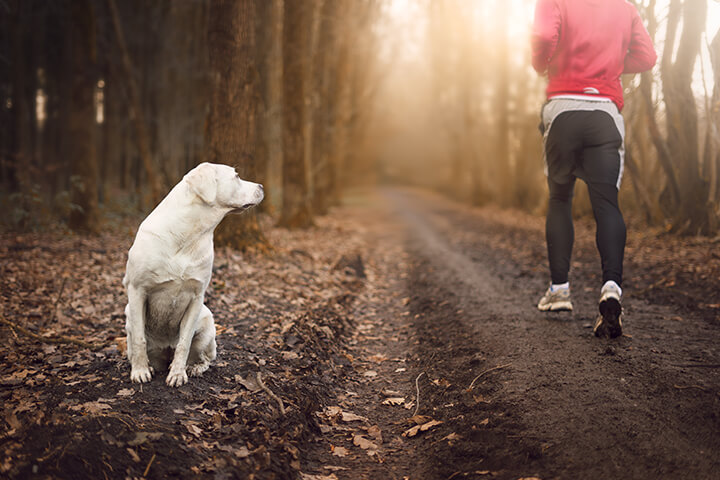
This test demonstrates that the dog is confident at all times when faced with common distracting situations. The evaluator will select and present two distractions. Examples of distractions include dropping a chair, rolling a crate dolly past the dog, having a jogger run in front of the dog, or dropping a crutch or cane. The dog may express natural interest and curiosity and/or may appear slightly startled but should not panic, try to run away, show aggressiveness, or bark. The handler may talk to the dog and encourage or praise it throughout the exercise.
Test 10
Supervised Separation
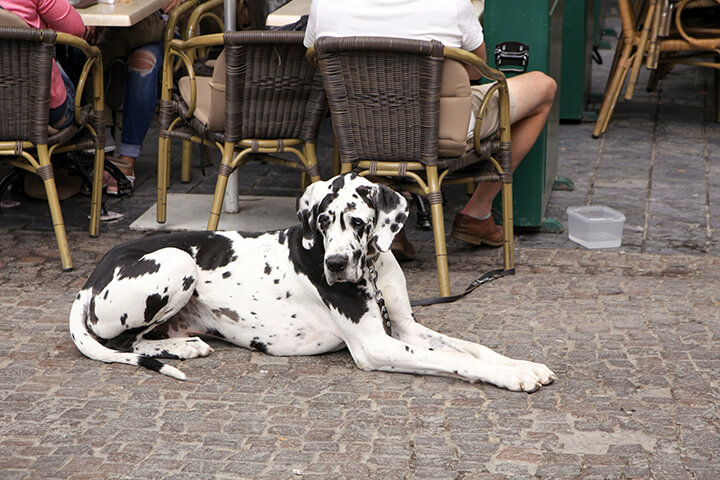
This test demonstrates that a dog can be left with a trusted person, if necessary, and will maintain training and good manners. Evaluators are encouraged to say something like, “Would you like me to watch your dog?” and then take hold of the dog’s leash. The owner will go out of sight for three minutes. The dog does not have to stay in position but should not continually bark, whine, or pace unnecessarily, or show anything stronger than mild agitation or nervousness. Evaluators may talk to the dog but should not engage in excessive talking, petting, or management attempts (e.g. “there, there, it’s alright”).
Each item of the AKC Canine Good Citizen program is tested individually with the dog and its handler. Most courses have a 3 to 4 class package in order to properly prepare you and your furry friend for the test. Once you pass your CGC test, you can send in the paperwork provided by your evaluator to the AKC for your official CGC title and certification!
Overall, the Canine Good Citizen program is an excellent beginner course for those looking to improve their dog’s obedience and impulse control through hands on training. This course lets you work with your dog 1-on-1, which is an excellent way to foster your relationship and increase the bond with your dog.
The CGC is also a wonderful foundation course for other AKC courses, such as AKC Community Canine (CGCA), AKC Urban Canine Good Citizen (CGCU), and AKC Therapy Dog. These are the advanced versions of the Canine Good Citizen class and require you to pass CGC before moving on to them. AKC also offers a course just for puppies – the AKC STAR Puppy course – to help your new pup develop proper social and play skills, and begin to learn foundational skills such as coming when called.
In conclusion, American Kennel Club has a splendid program for your dog to participate in multiple levels of classes, all with the goal of becoming a well-behaved dog at home and in public.
Interested in getting your dog certified as a Canine Good Citizen?
We have certified AKC evaluators on staff and offer private, semi-private, and group classes specifically focused on the Canine Good Citizen course content! Our typical course layout is 4 classes of hands on training from the course content where we find the training methods that work best for your dog and includes a FREE AKC test at the end. The program is $200, and is usually preformed over 2 to 4 weeks, depending on your and your dog’s ability level!
To get started, head over to our AKC Classes page and fill out our booking form!
